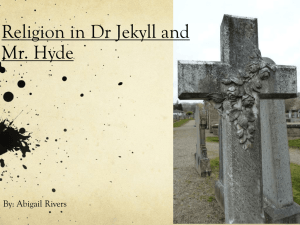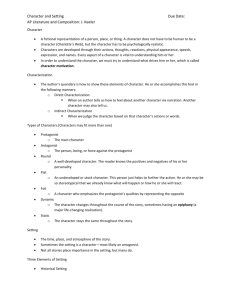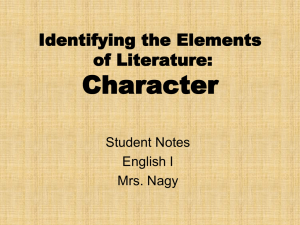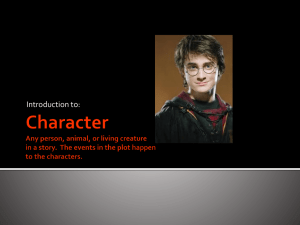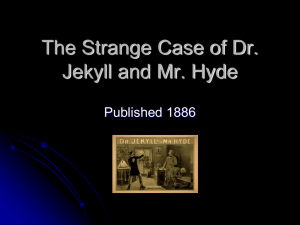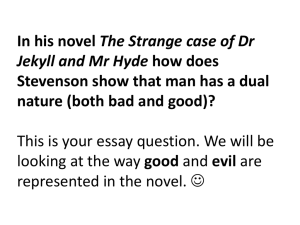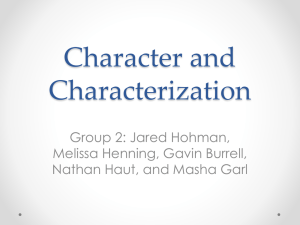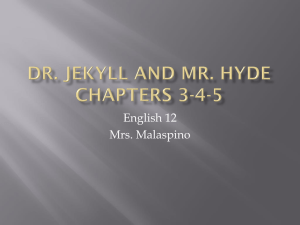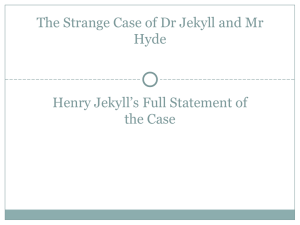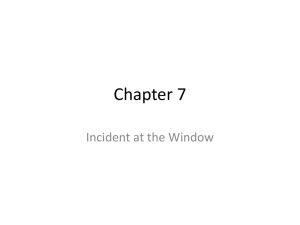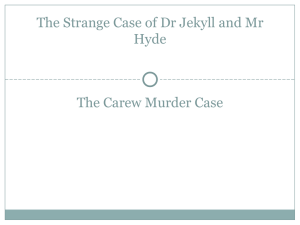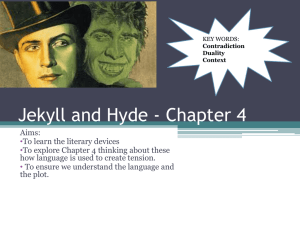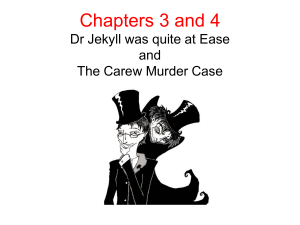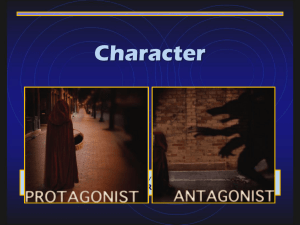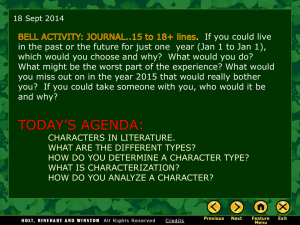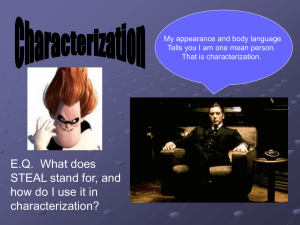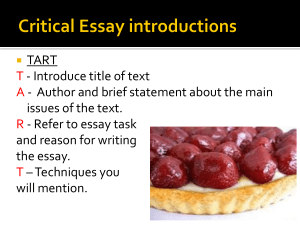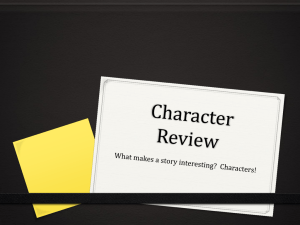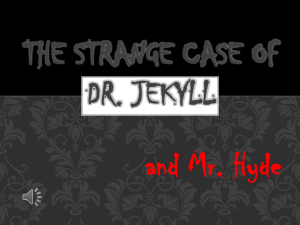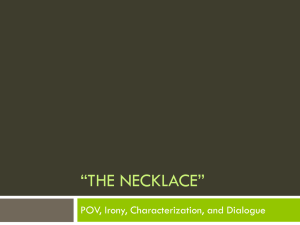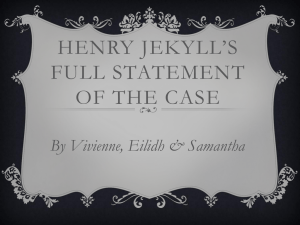Jekyll & Hyde: Characterization
advertisement
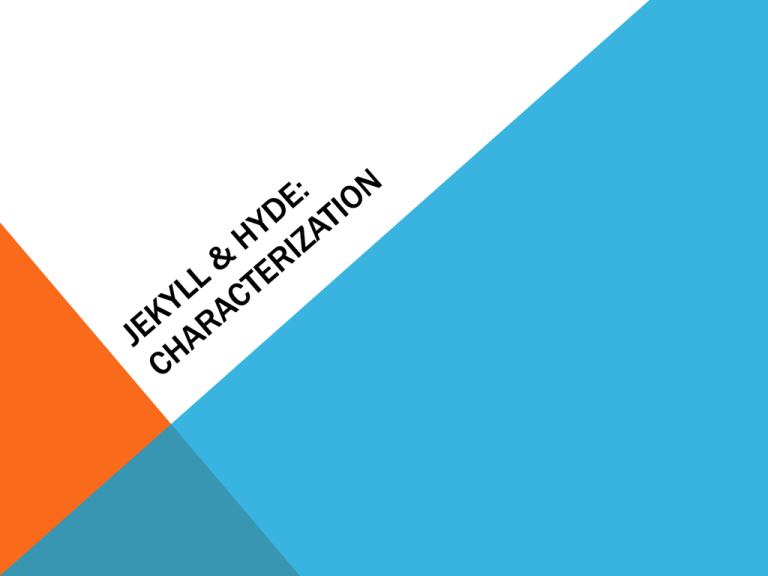
DO NOW Honors/Warnings/Transitions • Complete self-evaluation. • Review as class & share comments DO NOW • Split into partners • Review active reading strategies. Name THREE things you might annotate for. • In partners, annotate the given passage from Jekyll and Hyde. REVIEW • • Define the following 5 words: • Austere • Injustice • Loathe • Ignoble • Imposter Share paragraphs from last night’s homework MISSING WORK & WIKI MISSING WORK See sheet for missing assignments. HOW TO ACCESS WIKI • Website on Syllabus (http://english.hyde.wi kispaces.net/English+ 10) • Homework, handouts, lesson plans. OBJECTIVES • Introduce characterization • Review active reading strategies • Apply characterization to Dr Jekyll and Mr Hyde CHARACTERIZATION Definition: Characterization is the process of presenting the different aspects of character and personality of someone in a novel or short story. As readers, how do we learn about characters? • What they say (dialogue) • What they do (actions) • What they think (interior monologue) • What they have and wear • Where they are • The people with whom they associate • What others say about them • Through the author’s direct statement TYPES OF CHARACTERIZATION Direct tells the audience what the personality of the character is. Example: “The polite boy and friendly girl were both well behaved and did not disobey their parents.” Explanation: The author is directly telling the audience the personality of these two children. Indirect shows things that reveal the personality of a character. What clues do we, as readers, have to look for? http://www.youtube.com/watch?v =Yf7MT1p1VNI In this scene from clueless, what do we learn about Cher from her speech, actions, thoughts, clothing, response from others? TYPES OF CHARACTERS Protagonist : The central figure. The person/thing that drives the novel. Not necessarily heroic. Antagonist: Represents obstacles that the protagonist must face. Stands directly opposed to the protagonist. TYPES OF CHARACTERS Flat: Embody or represent a single characteristic, trait, or idea. They are not developed. • Why would an author not develop a character? Round: Complex, multi-dimensional, and developed, embodying a number of qualities and traits. • Usually the main character of a novel. • Think of examples. Static: The character does not change. Supporting Characters. Sidekicks. • Why not have a main character change Dynamic: The character changes. Physical change must also reflect change in self (insight, understanding, or value) Character Round Flat Dynamic Considered the best type of character development. Usually the protagonist and often the antagonist as well. Characters cannot be dynamic and flat, because in a flat character we do not know enough about them for them to recognize a change. If a flat character seems to change, it is usually due to poor writing. Static Development is considered well-done. Often found in protagonists in books for younger children or in a supporting/side-kick role. In very simple books, or in fairy tales, the protagonist may be flat and static. Also appropriate for minor characters in other books. Sitemaker.umich.edu/brittanydavis/files/characterization.doc APPLYING CHARACTERIZATION TO DR JEKYLL AND MR HYDE Mr. Utterson Mr. Hyde p. 5: “He was austere with himself…” p. 10: “He is not easy to describe…” p. 14: “In the course of his nightly patrols…” p. 13: “The figure in these two phases haunted the lawyer…” p. 15: dialogue with Hyde p. 15: dialogue with Utterson p. 17: “And the lawyer, scared by the thought…” p. 16: “Mr Hyde was pale and dwarfish” Activity: Review first two chapters. Put character’s name at the top. Divide poster into direct and indirect characterization. Using the sections above (and others) jot down images or bits of description about each character. What have we learned about them?
